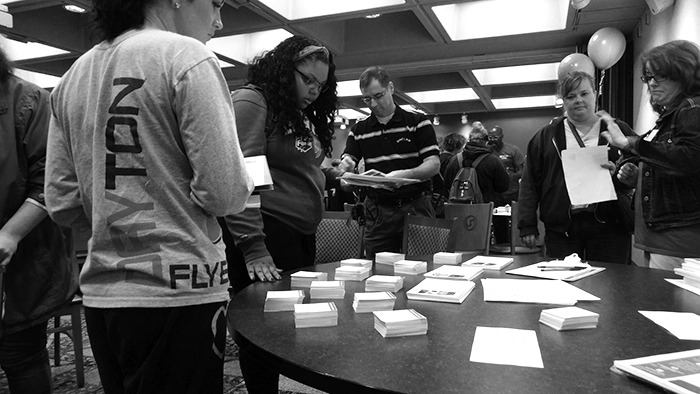Connect for Completion offers students the opportunity to get more involved with students and faculty within their major. Using five career communities, the program plans to connect students to other students, faculty and resources so they can succeed and graduate. The communities also hope to make the campus feel smaller.
Students are automatically put in one of the five communities based on their major. The five communities are Health Sciences, Liberal Arts and Social Sciences, STEM, Business, and Creative Studies. These communities hold events for students to learn more about professions in their desired field. The events are also for all the communities to come together for more broad subjects.
“It’s so easy to come in [college] and flounder or get overwhelmed. The events can provide information, but they can also provide connections with faculty, staff and other students. We’re trying to build connections between students. It’s very easy, especially in a commuter school, to not make those connections as easily,” Career Community Coordinator Julie Thompson said.
The communities also help in academic advising. Depending on a student’s area of study, that student is assigned to an advisor in their community to help them get the information they need.
“By specializing in career communities, we have a better system to make sure that the information the students are getting is accurate,” Chief Academic Advising Officer Andrew Runyan said.
As a part of making sure students are getting more accurate and consistent information, academic advising is now assigning students to a specific advisor. This idea came from feedback given by students. Advisors also wanted a closer connection to their students to ensure their success.
“We heard from students that they wanted a go-to person who would be their person to go to if they needed help with anything,” Associate Provost for Student Completion Kathleen Cleary said.
Connect for Completion is still a new program that has room to grow. The next steps in advancing Connect for Completion will be to find physical locations for each community and create a virtual career center.
Having physical locations for the communities will give students a place to go when they need something related to their field. The virtual career center will allow students to look at career options, the future of that field and what the student needs to do to complete their goal. The goal of the program will not change though.
“It really is about building a community for students so they feel like they belong,” Cleary said.
Belonging to these communities and getting involved in the community can help students succeed. Connecting students with other students and other resources help them find a place and support system while in school.
“When students are involved or engaged, they’re more likely to continue,” Thompson said.
Celia Lavoie
Reporter


